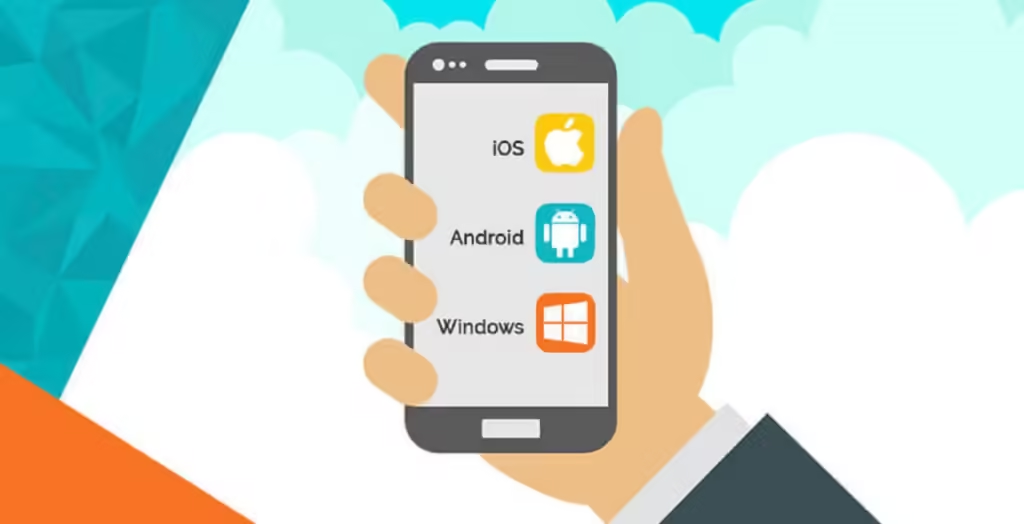Do you know people glance at their phones around 58 times daily? It’s because we regularly search for everything. People spend 88% of their time on apps, whether writing an email, playing games, checking social media, or taking pictures.

Therefore, while developing apps, various decisions should be made, from the basic concept to its positioning and target audience. Choosing the right technology stack for mobile app development is pivotal for your business success. Various programming languages, frameworks, and tools for mobile app development are available. However, selecting the perfect one depends on several factors, such as project requirements, target audience, budget, time constraints, and the development team’s expertise. Here, we will delve into the widely used tools and technologies and factors that need to be considered while selecting the stack for building the best solution:
Factors to Consider While Choosing the Technologies for Mobile App Development
Well choosing the perfect tech stack is quite challenging as there are varied options available. Even the most experienced developers find it difficult to make the right decision. To ease your work and aid you to choose the right tech stack, consider the following factors:
Type of Product
It’s crucial to choose the right technology stack in mobile application development. Considering the type of product you aim to build, check on the complexity, objective of business, load it is supposed to withstand, potential growth, and more. The complex project requires a more sophisticated combination of tools to implement your vision and turn it into reality.
Cross-platform vs native app development
Businesses frequently decide to create native apps for particular platforms, operating systems, or devices. As the market for mobile apps grows, new methods are appearing, such as the ability to write standard code for several platforms, especially iOS and Android. Opting for cross-platforms is more cost-effective, requires few resources and less time, and developers create a single codebase for both OSs simultaneously. Whereas native apps are fast and responsive, provide a simple user experience, and get full access to platform-specific APIs and hardware.
Scalability
Before choosing any tech stack, you must consider technical needs and its potential for expansion. A tech stack’s role in an application’s scalability is to manage the increasing load and number of users while allowing for the addition of new features.
For example, when designing an Internet of Things application, you must carefully assess the tech stack you select, as scalability is essential.
Security and Privacy
Security is always vital, and the risk of cyberattacks increases and changes annually with technological advancements.
It’s essential to safeguard your company and clients with a dependable text stack that tackles security and privacy issues if you intend to develop a video chat app, messaging app, medical software, or any other solution that handles sensitive user information. Think about some of the most reliable frameworks that provide security standards, such as Node.js.
Maintenance and Team Expertise
It’s essential to check whether you can maintain the application once it is released. Unless you plan to work, always choose a tech stack based on your team’s experience and expertise unless you plan to work with a company. It will be a great choice if you seek the Best Mobile App Development Company in Hyderabad. They have a team of experts who can deliver quality products per your requirements.
Financial Capacity
Product owners still need to take into account several crucial factors that may have an impact on their budget, even though the majority of tools are ready-made or open-source. These factors include the developer’s rate, which varies based on the product’s specialty, licensing fees, and maintenance costs.
With pre-made equipment, teams can produce goods more quickly. On the other hand, some could have fewer options for adding unique features. Therefore, there are hazards associated with inexpensive technology.
Know What Tech Stack is and Why it’s Important
A technology stack combines technologies a company uses to build and run an application and the development project. The technology stack is also called the tech stack and solution stack. Stacks can be created with a stack when one layer of an application is built on top of the layers; the client and serve sides are the two most important mobile app tech stacks.
Choosing specific technologies that work best for the tech stack that defines future prosperity and app efficiency is always essential. Any wrong decision may cost you more money, time, and resources and may lead to project failure. Well, it is essential to take mobile app design and its development process into consideration to examine the app idea.
The choice of a mobile app tech stack has various possible outcomes. The set of technologies you select will determine the stability of your application and how well it adapts to different operating systems and platforms.
Choose the finest technology stack available for your product concept and make no other decisions. Your selection will have a detrimental impact on the product’s performance and growth prospects.
Final Words
Choosing the right tech stack is not only a technical decision, but your project relies on it. It can either make or break your project. Have you ever considered creating a scalable and secure app that delivers an exceptional user experience? Always consider the type of product you’re building, and check whether it’s a simple tool or a complex platform with multiple features. Complex projects demand the sophisticated tools that bring your vision to life. The right tech stack ensures that your app is scalable, maintainable, and secure and provides an optimal user experience. When developing a mobile app, it’s essential to align the technology stack with the project’s specific requirements.
Properly selecting the tech stack may lead to success, efficiency, and handy applications for users; otherwise, extra expenses, time consumption, and sometimes project failure might be expected. Thus, one has to be very strategic and, if necessary, address the specialists for choosing the proper technology stack for implementing the mobile application, achieving the project’s goals, and meeting users’ expectations. Thus, make a decision that takes the direction of your project to the right side of innovation, efficiency, and consumer satisfaction. Are you willing to take that stand?







Leave a Comment
You must be logged in to post a comment.